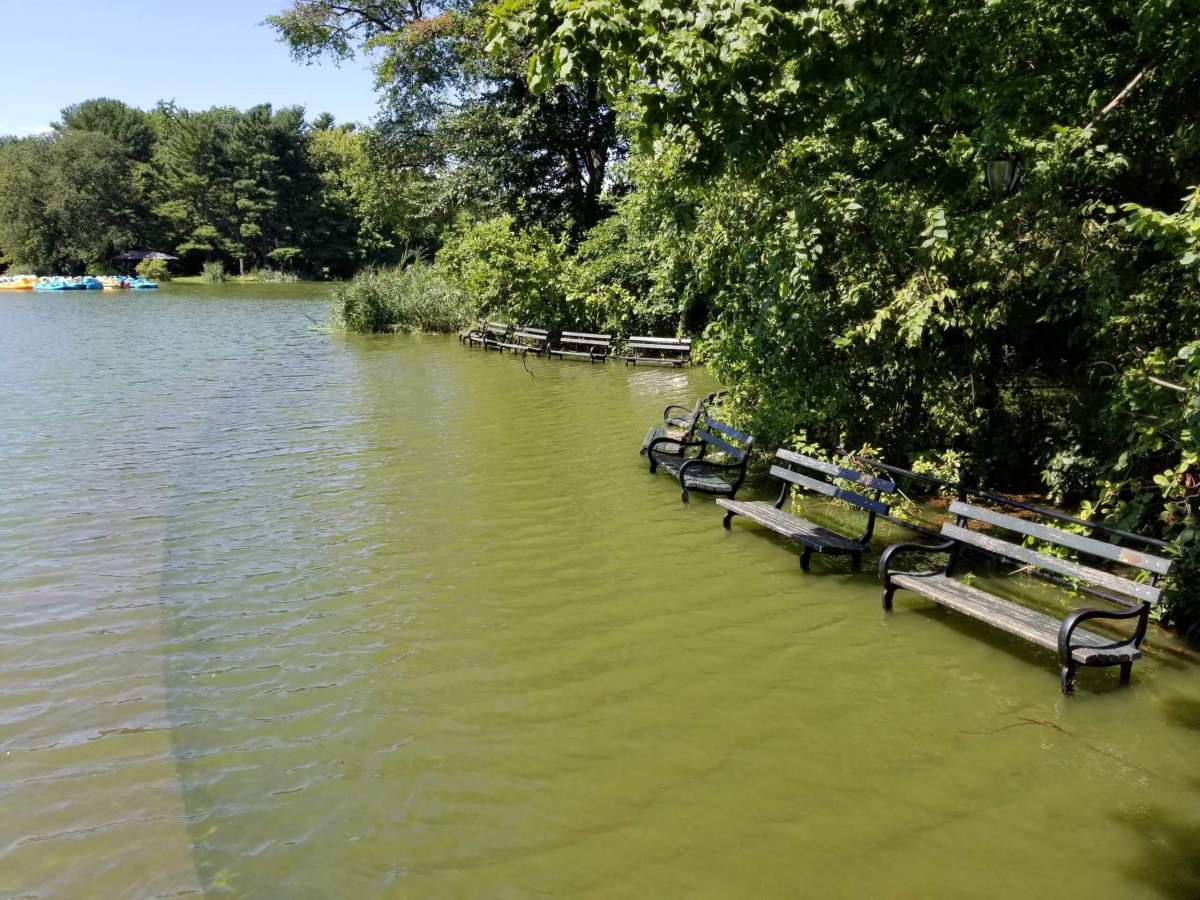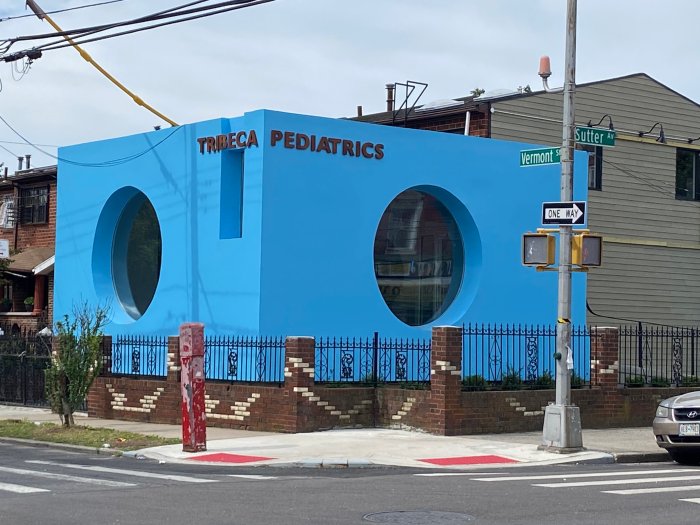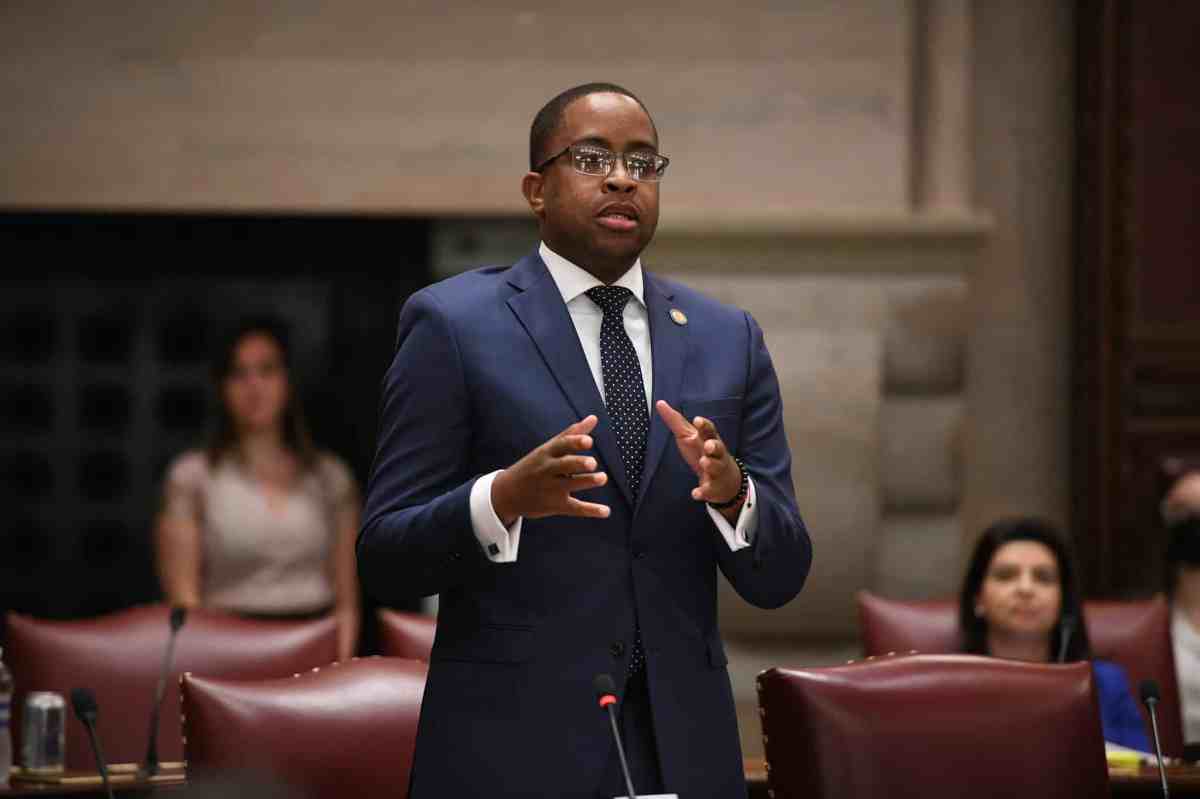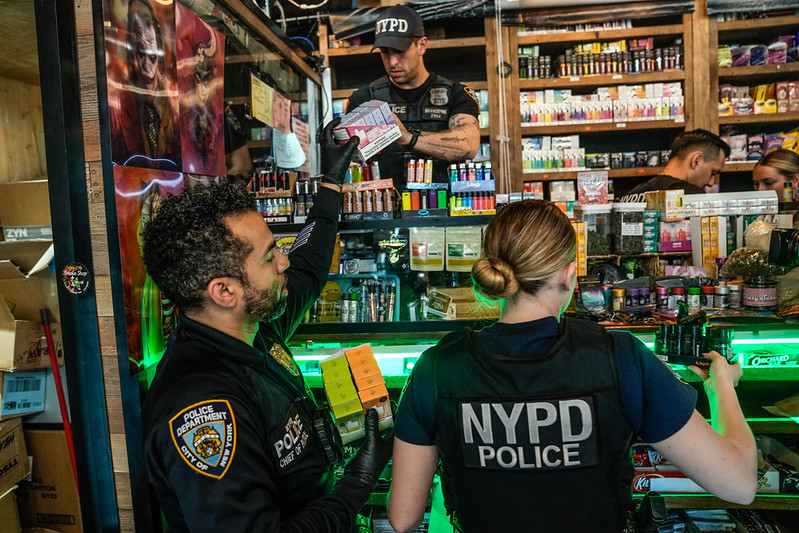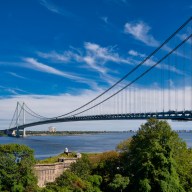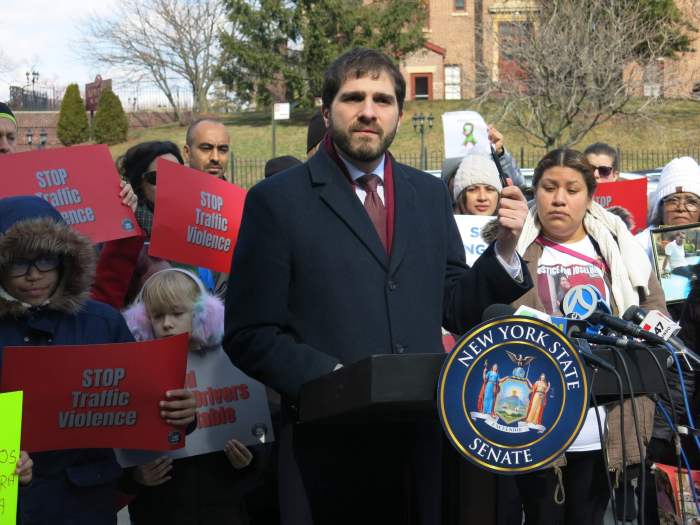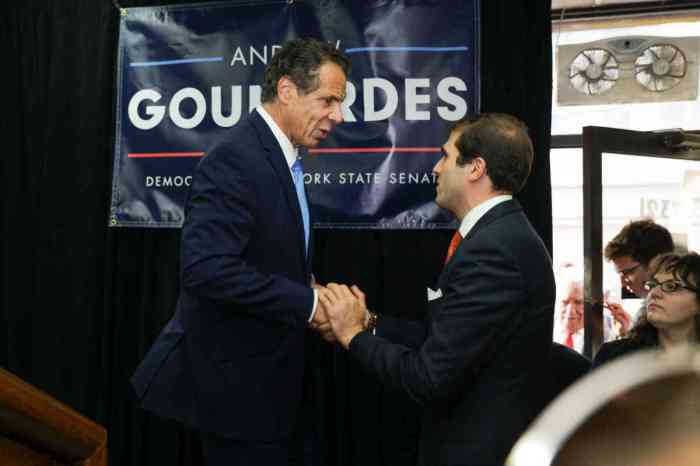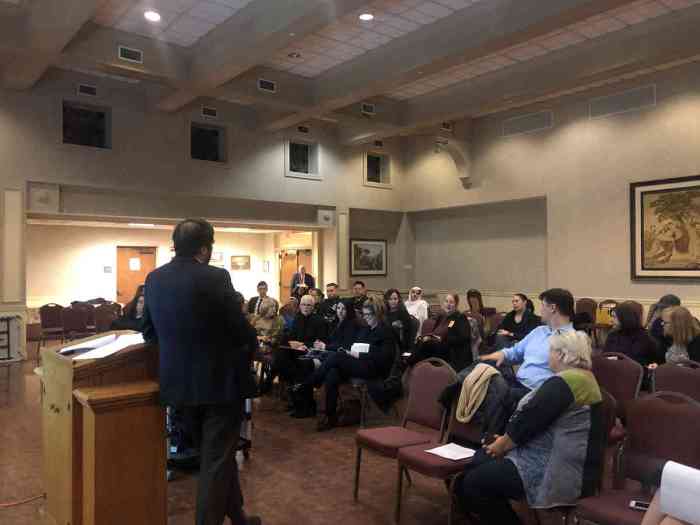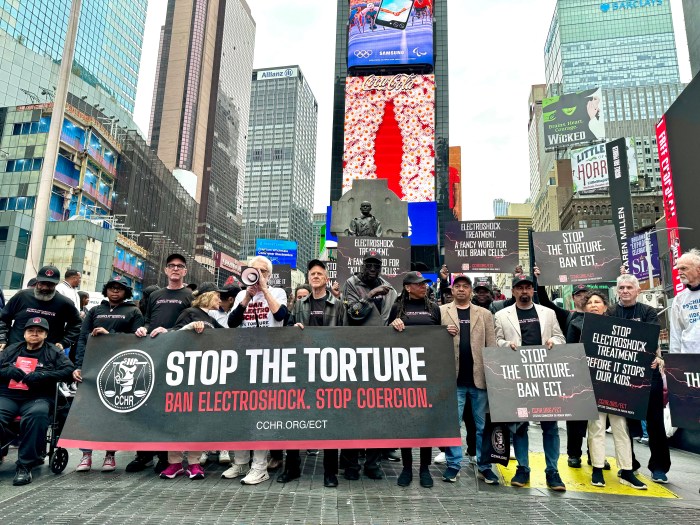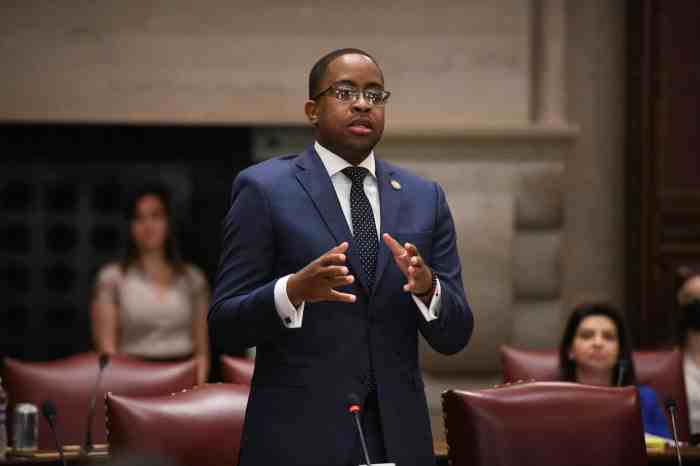Activists and legislators are pushing to include billions of dollars in the soon-to-be-due state budget for urgent resiliency projects, the likes of which could save imperiled low-lying areas of Brooklyn from catastrophic climate doom.
The $15 billion in climate funding advocates are calling for would put the state’s environmental spending for the coming fiscal year in line with the proposed Climate and Community Investment Act — so-named because it would effectively fund the goals laid out in the landmark 2019 Climate Leadership and Community Protection Act — which would potentially raise that sum annually by charging polluters a fee for each ton of carbon emitted.
The money would go toward renewable energy development, public transit, building and infrastructure electrification.
“I’m personally hoping the $15 billion this year is a trial run of how it would all operate,” said Daniel Loud, founder of the Bay Ridge Environmental Group, in an interview with Brooklyn Paper. “It’s $15 billion that would be allocated similarly to the CCIA. People would see these benefits and a lot of it would be invested directly in communities. They’ll understand that it’s delivering benefits to them directly, and hopefully over the next few years the CCIA could be passed and do this on an ongoing basis.”
Massive climate investments would be felt particularly saliently in southern Brooklyn, where a massive portion of the population lives in low-lying coastal neighborhoods that have already borne serious consequences from climate change, and are set to hurt even more in the coming years.
“We have to be investing into our environment, to protect our environment, to protect our neighborhoods,” said state Sen. Andrew Gounardes, whose South Brooklyn constituency is facing particular vulnerabilities to climate change, at a Sunday rally in Bay Ridge. “To protect vulnerable communities in southern Brooklyn that were totally washed out during Hurricane Sandy, that were flooded anew during Hurricane Ida, and that are gonna continue to be vulnerable and susceptible to the increased effects of climate change the longer we delay.”
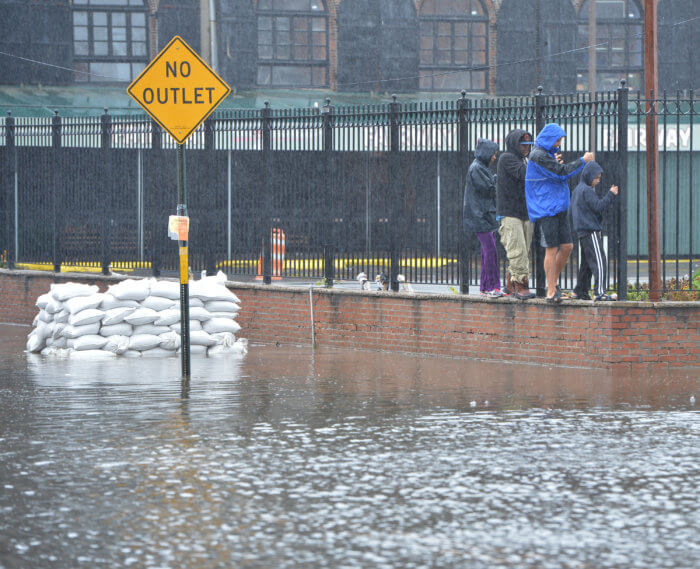
Gounardes and other state legislators, many from communities facing particular peril from climate change, are waging an uphill battle to allocate $15 billion of the upcoming state budget, due April 1, to combat climate change. Neither Gov. Kathy Hochul’s executive budget nor the one-house budgets proposed by the Assembly and Senate allocated anywhere close to this, but advocates are continuing to lobby for the funding they say is necessary to reach the goals of the CLCPA, which commits the state to the goal of 100 percent renewable electric generation by 2040, and reducing greenhouse gas emissions by 85 percent below 1990 levels by 2050.
The “Climate Action Council,” which was created in the 2019 climate law, last year put out a “scoping plan” of draft regulations to meet CLCPA goals, and is soliciting public comment on those regulations until June.
With $15 billion in the upcoming budget, advocates say the state could fund thousands of green jobs for projects like building electrification and offshore wind, dole out billions in grants to community organizations helping facilitate a “just transition” from fossil fuels, and direct assistance to households to help reduce energy costs and output.
In Brooklyn, that money could go toward the unsexy, but crucial work of connecting the proposed offshore wind development at the South Brooklyn Marine Terminal to the existing energy grid, for one. It could also fund more projects like Sunset Park Solar, a cooperatively owned solar power project helmed by the local nonprofit UPROSE, which aims to make solar power affordable and accessible to low-income New Yorkers.
Despite the high price tag, advocates say that the cost of doing nothing will be far higher. Hurricane Sandy alone caused nearly $20 billion in damage in New York, the city estimates, and many communities are still recovering nearly a decade later. The city suffered billions more in damage from Hurricane Ida last year, and storms are only expected to become more frequent and devastating as temperatures continue to rise, and the city’s non-resilient infrastructure ages.
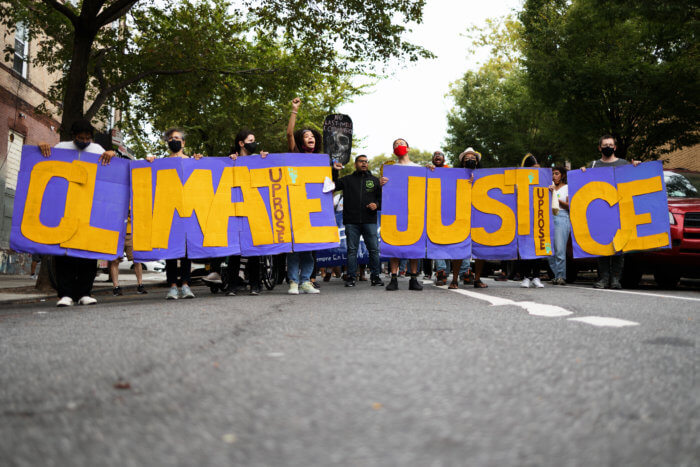
After several decades of governments the world over deferring serious action, scientists have been proffering grim predictions for the future of the planet as the negative impacts of climate change begin to lock in and become irreversible. Sara Gronim, a member of the steering committee at 350 Brooklyn, says that while some may lose hope at what seems like an overwhelming, intractable problem, there’s still time to mitigate the damages and prevent catastrophe, even if bad news is all but inevitable.
“It seems like such a huge problem that people feel overwhelmed and they’re not sure even how to start,” Gronim told Brooklyn Paper. “But there are many ways to start. Like this money.”
And the cost of inaction is incalculable: much of Brooklyn’s low-lying land, like the neighborhoods around Jamaica Bay, Red Hook, Bay Ridge, Sunset Park, and Williamsburg, could in the coming decades become unlivable as the shoreline recedes and flooding becomes a regular occurrence. Millions of displaced waterfront residents fleeing inland would likely result in massive unaffordability, overcrowding, food scarcity, and unrest. And the areas not at risk of becoming the Lost City of Atlantis would not be a pleasant utopia, either.
“It is also the case that without retrofitting and putting in more trees, places like Brownsville will become unbearably hot,” Gronim said. “So while it will physically be there, will it be bearable to be there? There’s no reason to think we would escape social and political unrest.”


